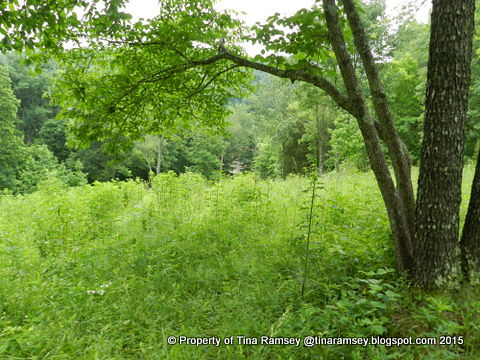
Mr. Fix-it and I have been working on our land for over two years now and this particular hill is a main focal point of our efforts. When we purchased the land this 800 foot long and steep hill was mainly all tree saplings, blackberry vines, and weedy trees. It was a mess! My vision for it was to restore it to a native prairie/woodland type settings with native wildflowers (forbs) and native grasses growing on it.
To begin with we had lots and lots of broomsedge. I love the broomsedge as it is an easy care native grass that is very attractive in the winter, but I also wanted some forbs (wildflowers). Forbs are what gives the ecosystem some variety and the wide range of native forbs available ensures that pollinators will have a wide choice of plants to choose from on their journeys. Also, if you look at my native warm season grass post about wintertime habitats you will quickly see that broomsedge by itself can get pretty boring. Looking at the above picture you can see there is much more than grasses growing on this hill now. Some might see it as a weedy worthless pasture but I see it as nirvana--and success!
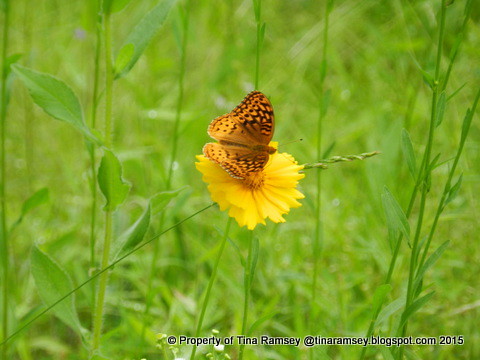
After Mr. Fix-it and I cleared the hill I purchased a bunch of native wildflower seeds and winter sowed them in the early spring of last year. The process for pretty simple. I purchased a seed mix from Roundstone Native Seed Company and spread them around the hill after I aerated the hill to provide some anchoring for the seeds. Of course, the first year of wildflower sowing you generally won't get many blooms, though we did have a few last year. Unfortunately, with the house build and the underground electricity ditch coming right up Wildflower Hill I did not have much time to really focus on the hill and most of the blooms were from dormant seeds on the hill. This year I ride up and down the hill each day and marvel at all the changes to the plants and all the pollinators those plants bring in. Right now the frittilaries are very busy with the wildflowers and are the dominant butterfly visible to me.
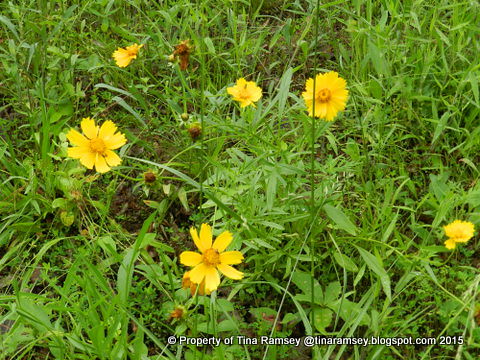
The coreopsis is beautiful and quite sunny.
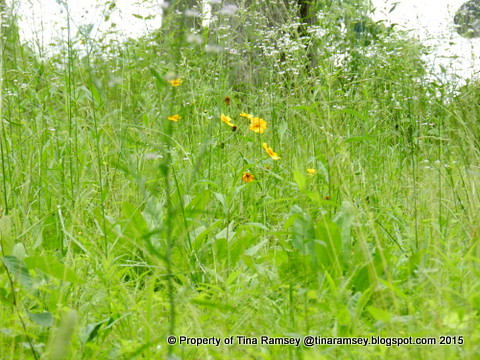
To me this is one of the most beautiful gardens around-nature's garden! Not tidy and neat at all but so full of life, color, and beauty.
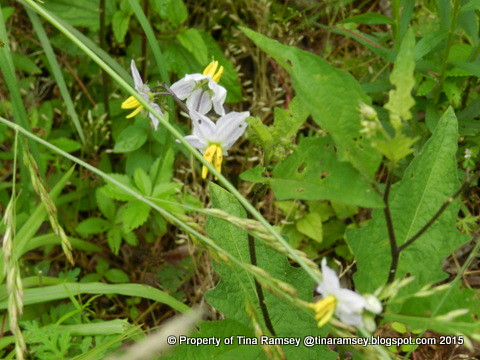
Even the very weedy horse nettle can be pretty growing in this mix of forbs and grasses. I so far don't have a major issue with horse nettle but since it does not provide benefit for the wildlife I think I'll be taking action to prevent this horse nettle from getting out out of hand.
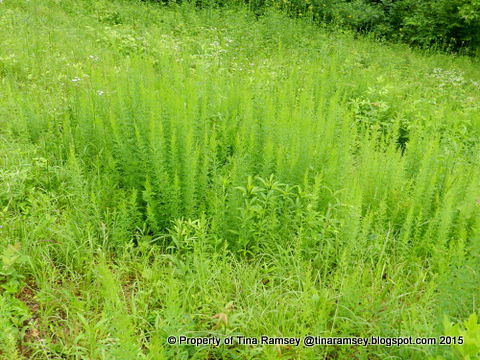
This particular wildflower is problematic for me but not in this spot. Can you see the upright feathery like green plants in the middle of the above picture? It is lespedeza and is a big pain in the butt. While lespedeza can be beneficial as forage for cattle and other wildlife, it is quite a terrible weed in a cultivated garden such as what I have closer to the house. The stems are wiry and the roots go deep. It is almost impossible to pull out and digging it out disturbs adjacent plants. I am still going to fight the battle in the gardens though. In this spot the lespedeza is fine. I do hope it does not spread though.
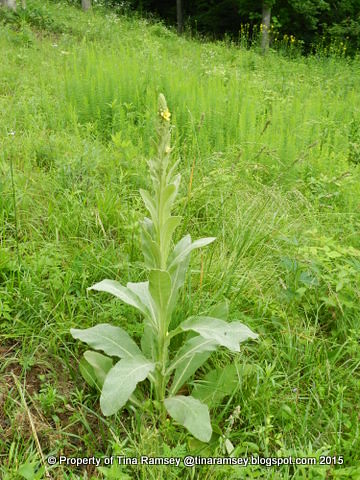
Verbascum thapsis is an interesting and easy to identify wildflower. It is an introduced plant and is pollinated by bumblebees. On the hill it is scattered around but not in such numbers that it will take over the other wildflowers. I enjoy its tall stalks of bright yellow flowers.
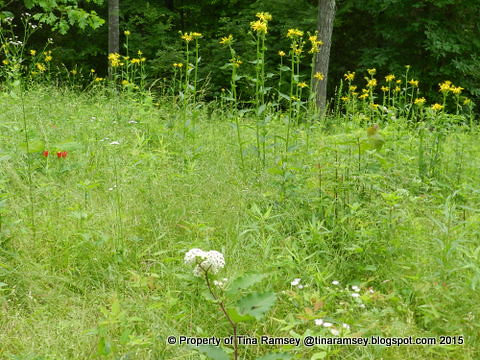
Here is a good picture of a few of the many forbs found growing on the field that really pique my interest. Pictured are red Indian Pinks (Spigela marilandica), White milkweed (Asclepias variegata), and the yellow is what I believe to be Coreopsis major.
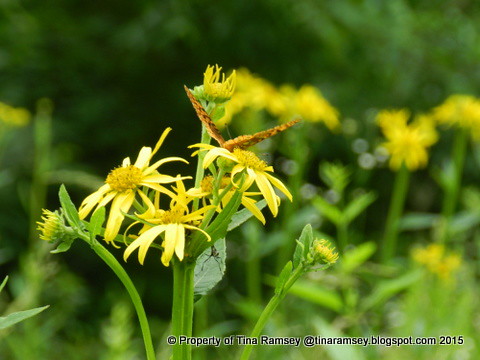
I believe this to be Coreopsis major.
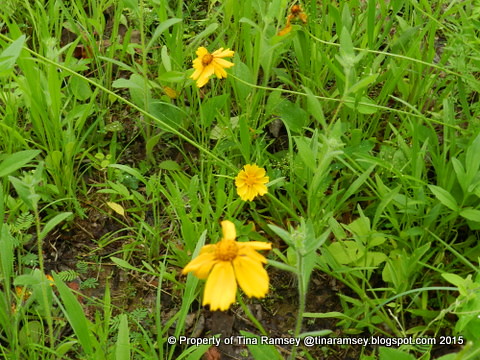
Lanceleaf coreopsis.
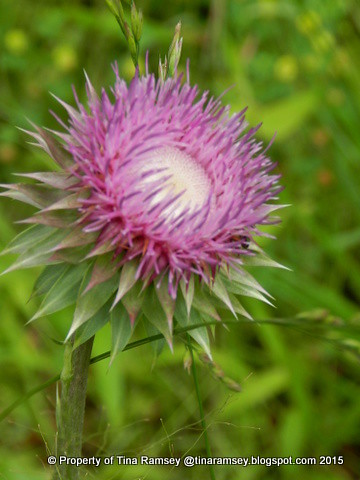
Thistle, not sure which kind.
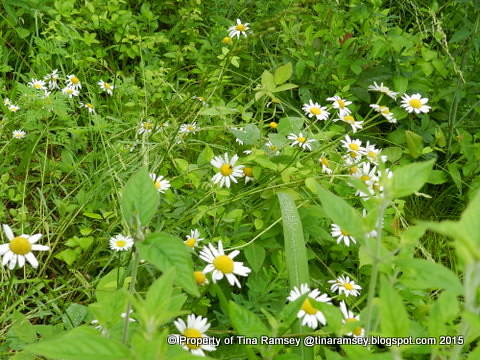
Oxeye daisies (Chrysanthemum leucanthemum)
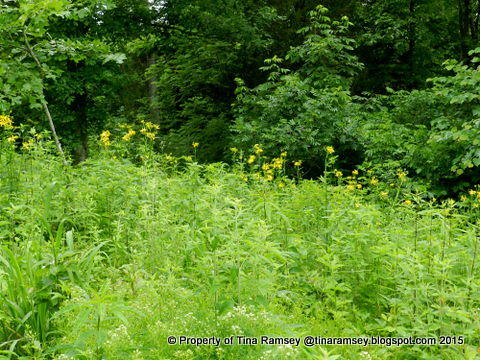
Coreopsis major on the northern hill crest.
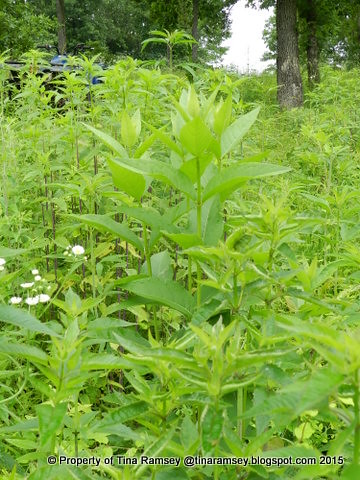
I am pretty excited to see what kind of wildflower this tall thick one turns out to be. It has not bloomed yet but is looking good.
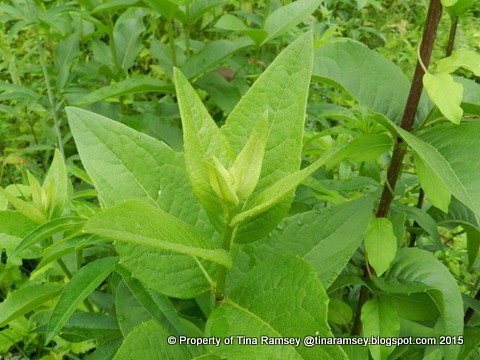
Does anyone know what it could be?
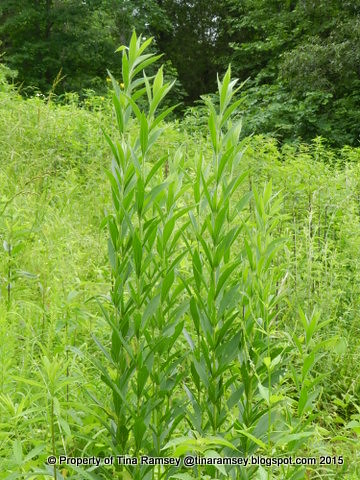
This may be goldenrod. I don't know.
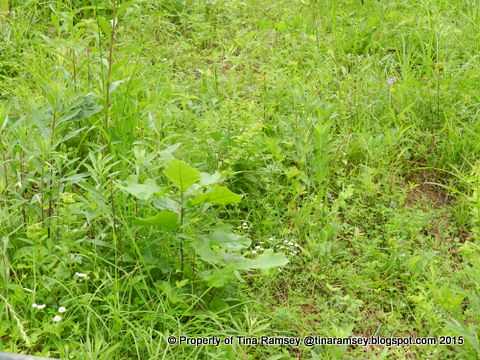
Unfortunately we still have some woodies growing on the hill. Bushhogging one time per year will keep them under control. We bushhog in the late winter.
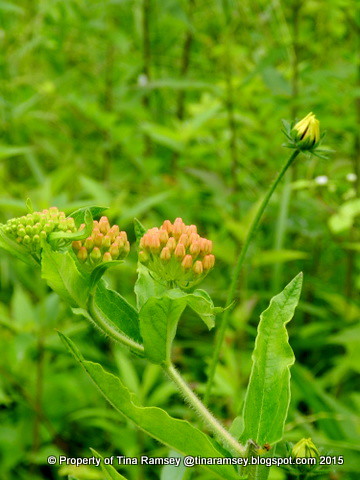
Butterfly weed and rudbeckia have showed up.
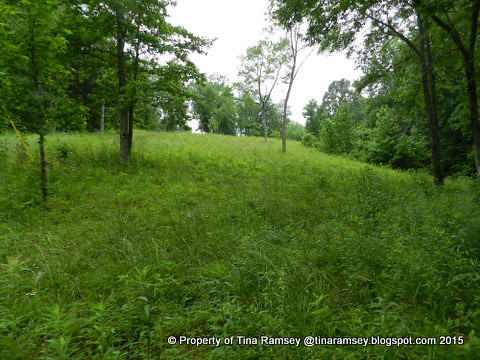
This is a view from below the huge Wildflower Hill. It definitely looks weedy but paradise to me! The hill faces east and has some mature cherry, oak, hickory, maple, and gum trees dotted about. I am grateful the previous owner had the bulldozer leave a few trees when he cleared this hill. The trees add to the diversity, provide some shade, and look nice. They have so far not bothered the wildflowers growing here. We have sunny, part sunny, and even shade wildflowers growing on the hill.
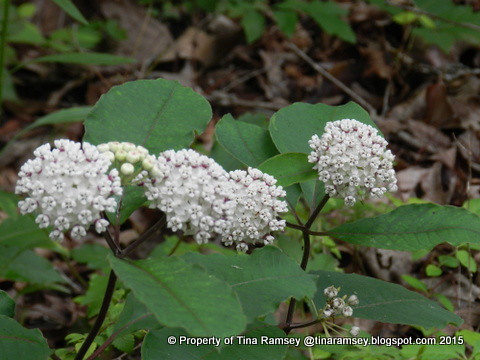
White milkweed (Asclepias variegata) are a wildflower that is good for monarchs and can grow in shade-even full shade. This milkweed grows all over the property and Mr. Fix-it and I like it.
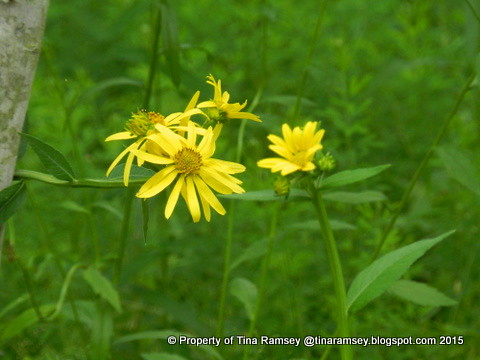
I am not sure what type of wildflower this yellow ray flower can be. I think perhaps Coreopsis major. Does anyone know? It is blooming everywhere in my part of Tennessee right now. I love its sunny disposition. There are so many yellow ray flowers that I have a hard time keeping up with them all.
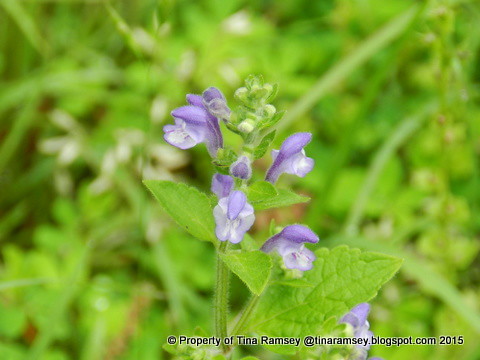
This is some kind of skullcap. The folks at the Tennessee Native Plant Society think perhaps it is hairy skullcap. I think they are right after reading this link describing how it is difficult to identify skullcaps since so many are similar to each other.
I still have lots of cultivated gardens here too but they are unfortunately inundated with another wildflower called ragweed. By the time I weed one garden it is filled with more weeds. It is a struggle for me to get the gardens up to my standard. In spite of this that is not why I am focusing on wildflowers. I adore wildflowers and always wanted a wildflower area. The Wildflower Hill is but one of the many areas here. Soon Wildflower Hill will be covered in purple bee balm and other summer wildflowers. The very nature of change in a garden is something I love to watch so I am really liking the flower progression. I also have a small (900 square foot) field I planted and am cultivating for wildflowers. It is in full bloom and I hope to show it on here soon. Its location is right near my beehives so it is a great thing for them. I have been rather busy with family visiting and maintaining things day by day but am enjoying wildflowers....
in the garden....and hope you are too.
So good to see a post from you and what a delight your 'wild flower' field is. The one tall plant that you wonder if it might be a goldenrod. I think so too, as I am growing 'seaside goldenrod' in a pot and that's what it looks like. I wanted one that would grow in our area, and this is a native I picked up.
ReplyDeleteI look forward to seeing more of what is going on at your newest property.
Happy Summer ~ FlowerLady
Your wildflower hill is looking nice. You can empathize with Christopher and what he calls the lush. He is always tending the lush to keep the unwanted out. I admire those that have large gardens and can have all the different types of wildflowers that I get to see now and then right outside their door. I need to get some of that milkweed going in my garden. It is pretty.
ReplyDeleteSo much greenery, so much beauty! :-) Thanks.
ReplyDeleteGreetings from London.
I love this natural wild flower project of yours the best of all. It's so pretty and good for the pollinators.
ReplyDeleteI couldn't get all the photos to show for me, but what did come up looks great. Such a variety. Our hospital has some areas they are returning to native grasses and flowers. Love it. I spent some time out there taking photos recently. What a great place you have to put in these expanses of prairie.
ReplyDeleteSo enjoying your wildflower hill. So happy that you all have such a wonderful place.
ReplyDeleteBravo,
ReplyDeleteBravo, Tina. What a project. I love it.....
What a beautiful place! I am so impressed with all that you have accomplished, Tina. I have struggled to get certain wildflowers to grow in one small plot here, so your success in getting such diversity in just two years is pretty amazing. Such a great place for the pollinators!
ReplyDeleteYour wildflower hill has turned out beautiful! In time, I am sure it will be more full of beauties....
ReplyDelete